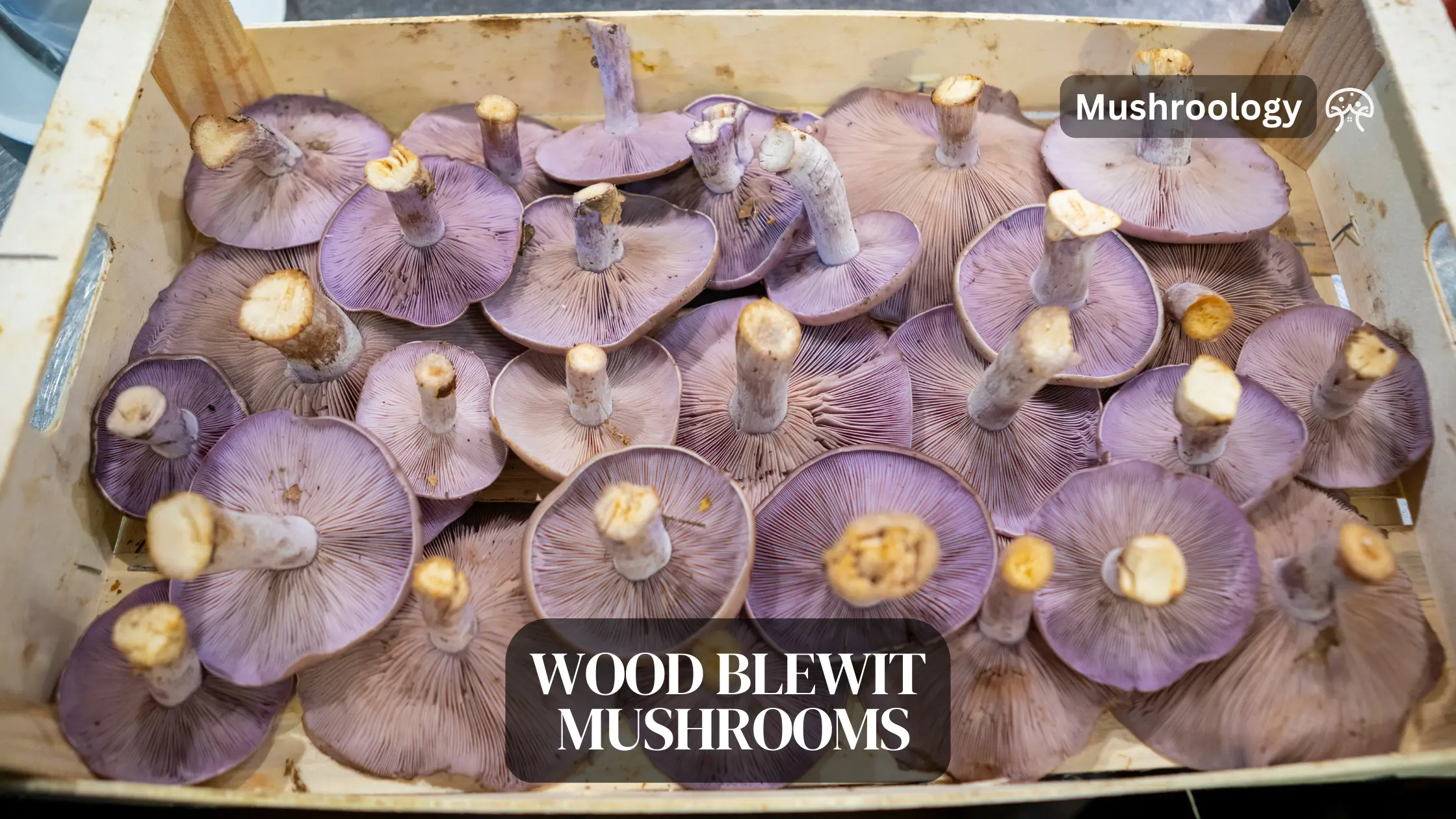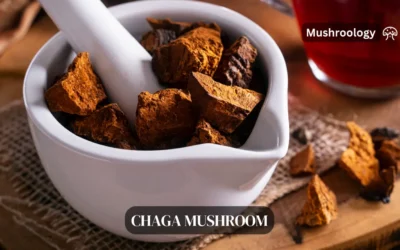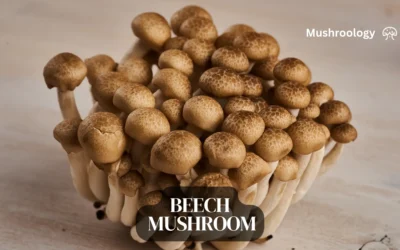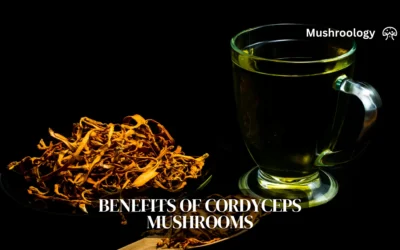The Wood Blewit mushroom, known scientifically as Lepista nuda, is a fascinating mushroom that not only offers a unique culinary experience but also has a rich history and a variety of uses. Native to both Europe and North America, this mushroom is identifiable by its violet-tinged cap and gills when young, which mature into a more ochre or tan colour. The Wood Blewit is a saprobic species, thriving on leaf litter in deciduous and mixed woodlands, as well as under hedgerows and even on garden compost heaps.
Unique Characteristics of Wood Blewits
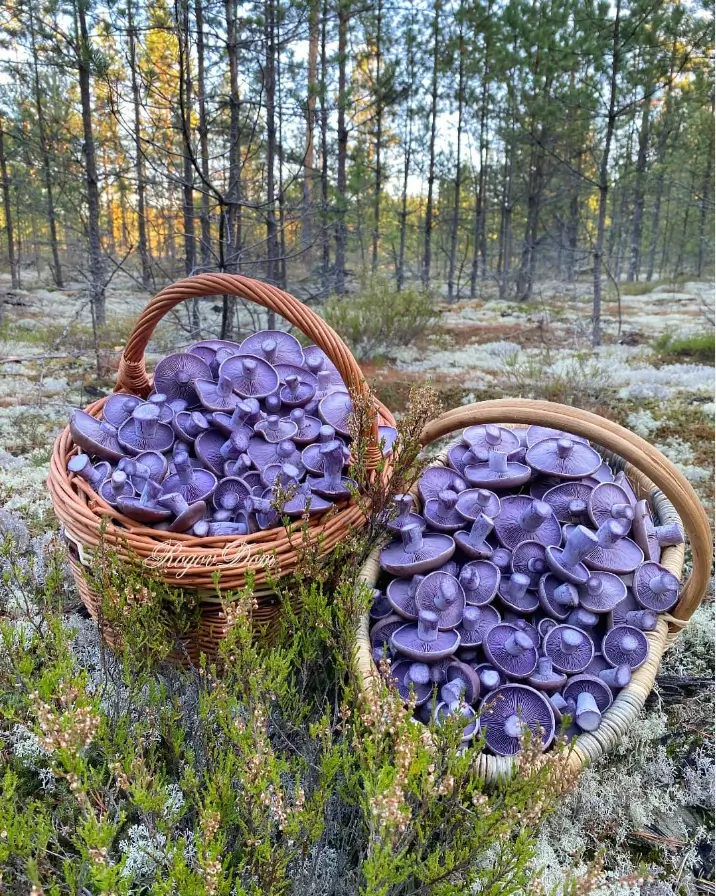
- Colour Transformation: The cap of the Wood Blewit starts with a violet hue and fades to ochre or tan, making it a visually dynamic species to grow.
- Fruiting Conditions: Unlike many other mushrooms, Wood Blewits require a frost snap to initiate fruiting, often appearing in late autumn or winter and sometimes fruiting well into December during mild weather.
- Culinary and Dyeing Uses: While edible and popular in European markets, Wood Blewits can also be used to dye fabrics or paper a grass-green colour when boiled in water.
- Habitat Flexibility: They can be found in various habitats, including woodland, dune slacks, and even urban areas with suitable organic debris.
Cultivation Overview
Growing Wood Blewits at home is a process that requires patience and attention to detail. It involves preparing a suitable substrate, inoculating with spawn, and providing the right conditions for mycelium establishment and fruiting. This mushroom’s lifecycle includes a necessary cold period to trigger fruiting, which means that cultivation can span over a year from the initial setup to harvest.
Why Grow Wood Blewits?
- Extended Season: Wood Blewits offer an extended harvesting season, often being one of the last mushrooms available after others have disappeared.
- Aesthetic Appeal: Their unique coloration makes them a beautiful addition to any garden or indoor growing space.
- Culinary Delight: They have a pleasant taste and aniseed odor, making them a delightful ingredient in a variety of dishes.
In the following sections, we will delve into the specifics of how to cultivate Wood Blewits, covering everything from substrate preparation to the final harvest.
Preparing Your Cultivation Space for Wood Blewit Mushrooms
Cultivating Wood Blewit (Lepista nuda) mushrooms at home starts with creating an environment that mimics their natural habitat as closely as possible. This preparation phase is crucial for the successful growth and fruiting of your mushrooms. Here’s how to set up your cultivation space, whether you’re planning to grow these mushrooms indoors or outdoors.
Selecting the Right Location
Outdoor Cultivation: Wood Blewits naturally thrive in cool, moist environments, often found in deciduous woodlands, under hedgerows, or on compost heaps. For outdoor cultivation:
- Choose a shaded spot in your garden that receives indirect sunlight. An area under trees or beside a building that provides partial shade is ideal.
- Ensure good drainage. While Wood Blewits like moist conditions, waterlogged soil can be detrimental. If your soil is heavy clay, consider raising the bed or incorporating sand and organic matter to improve drainage.
- Consider the soil type. Wood Blewits prefer rich, loamy soil. You can enhance your soil by adding compost or well-rotted manure, which will also provide the necessary nutrients for growth.
Indoor Cultivation: Growing Wood Blewits indoors allows for more control over the environment, making it possible to cultivate mushrooms year-round.
- Select a cool, well-ventilated area such as a basement, garage, or shed where temperatures can be maintained between 45-70°F (7-21°C).
- Ensure indirect light. While Wood Blewits do not require much light, a source of indirect sunlight or a few hours under grow lights will support their growth cycle.
- Prepare for humidity control. Mushrooms require high humidity to develop properly. In an indoor setting, this might mean using a humidity tent or a humidifier to maintain the right conditions.
Gathering Supplies
Whether you’re growing Wood Blewits indoors or outdoors, you’ll need a few basic supplies to get started:
- Wood Blewit spawn: This can be purchased from a reputable supplier. Ensure it’s fresh for the best results.
- Substrate: For outdoor beds, a mix of hardwood chips, straw, and compost works well. Indoors, pasteurized straw or hardwood pellets are commonly used.
- Containers: If growing indoors, you’ll need containers or bags for your substrate. These should be clean and have the ability to allow air exchange while retaining moisture.
- Tools for preparation: This includes a shovel or spade for outdoor beds, and a large pot for pasteurizing substrate if growing indoors.
- Water source: A spray bottle for misting or a garden hose with a fine spray setting will be necessary to maintain moisture levels.
Preparing the Substrate
The substrate is the growing medium for your mushrooms and plays a crucial role in their development. For Wood Blewits, a rich, organic substrate is key.
- Outdoor beds: Layer your chosen spot with cardboard to suppress weeds, then build your substrate layers with hardwood chips, straw, and compost. The cardboard will also retain moisture and attract mycelium.
- Indoor containers: Mix your substrate (such as pasteurised straw or hardwood pellets) with water until it’s moist but not soggy. Sterilise or pasteurize the substrate to kill off any unwanted bacteria or fungi, then cool before inoculating with spawn.
Creating the Ideal Environment
Once your space is selected and your supplies are gathered, focus on creating the ideal conditions for your Wood Blewits to thrive:
- Moisture: Keep the substrate consistently moist but not soggy. Use a spray bottle for indoor containers or a mulch layer outdoors to retain moisture.
- Temperature: Monitor the temperature closely, especially indoors, to ensure it remains within the ideal range for Wood Blewits.
- Airflow: Good ventilation is important to prevent carbon dioxide buildup and encourage healthy mushroom development.
By carefully preparing your cultivation space and closely mimicking the Wood Blewit’s natural growing conditions, you’re setting the stage for a successful and rewarding mushroom cultivation experience.
Fruiting Your Wood Blewits: From Flushes to Harvest
Wood Blewits typically fruit in the fall, a full year after planting.
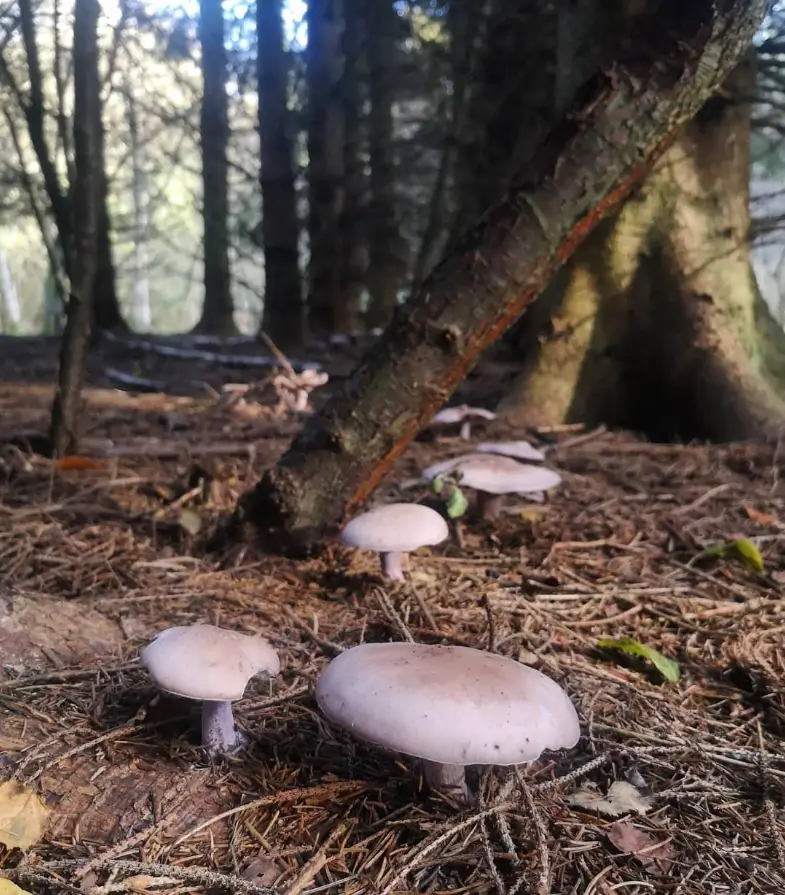
Initiating Fruiting
- Cold Snap: Wood Blewits require a cold period to initiate fruiting. A hard frost or freeze is necessary, so plan your cultivation accordingly.
- Moisture: Keep the substrate consistently moist but not waterlogged. Check your bed regularly and water with a sprinkler if necessary.
- Natural Rainfall: Wood Blewits often fruit after rainfall, so monitor your bed and water if needed.
Maintaining Fruiting Conditions
- Temperature: Maintain temperatures between 45-70°F (7-21°C) for optimal fruiting.
- Airflow: Ensure good ventilation to prevent the buildup of carbon dioxide and encourage healthy mushroom development.
- Mulching: Use straw, wood chips, or other materials to maintain moisture and regulate temperature.
Harvesting Your Wood Blewits
- Timing: Harvest Wood Blewits when they start to slow or stop doubling in size.
- Picking: Gently twist the mushrooms out of the soil, trim them clean, and store them refrigerated for up to 1 week in a paper bag.
- Dehydrating: Dehydrate any mushrooms not cooked within a week and store in an airtight container for other culinary uses.
Multiple Harvests
- Multiple Flushes: Wood Blewits can fruit multiple times if they get enough rain to initiate fruiting during their season.
- Regrowth: Cut stems can regrow with the right conditions, so keep an eye on your bed.
Cooking and Storing
- Cooking: Wood Blewits must be cooked thoroughly and are best cooked simply, with subtle flavors.
- Storage: Store cooked Wood Blewits in the refrigerator for up to a week, or dehydrate for long-term storage.
By following these steps and maintaining the ideal conditions, you’ll be well on your way to a successful Wood Blewit mushroom cultivation experience.
Troubleshooting Common Issues in Wood Blewit Cultivation
Growing Wood Blewits can sometimes present challenges. Here’s how to identify and address some common issues that may arise during the cultivation process.
Contamination
Contamination is a common issue in mushroom cultivation, and it can manifest in various ways, such as mold growth, bacterial colonies, or pests.
- Signs of Contamination: Look for unusual colors like green or black mold, off-smells, or a slimy texture on the substrate or developing mushrooms.
- Prevention: Sterilize or pasteurize your substrate and tools, maintain a clean workspace, and wash your hands before handling the mushrooms or substrate.
- Solutions: If contamination occurs, remove the affected area immediately to prevent it from spreading. In severe cases, you may need to discard the entire substrate to avoid risking the rest of your crop.
Poor Fruiting
Sometimes, despite your best efforts, your Wood Blewits may not fruit as expected. This can be due to a variety of environmental factors.
- Incorrect Humidity or Temperature: Wood Blewits require specific conditions to fruit. Ensure the humidity is high and the temperature is within the ideal range of 45-70°F (7-21°C).
- Inadequate Light: While Wood Blewits don’t need much light, they do require some indirect light to fruit properly. Consider using a grow light if natural light is insufficient.
- Solutions: Adjust the environmental conditions as needed. Increase humidity by misting more frequently or using a humidifier. Regulate temperature using heaters or fans, and ensure there’s enough indirect light.
Substrate Issues
The substrate is the foundation of your mushroom cultivation, and issues with it can lead to poor growth or no growth at all.
- Overly Wet or Dry Substrate: The substrate should be moist but not waterlogged. If it’s too dry, mist it more frequently. If it’s too wet, improve drainage or reduce watering.
- Depleted Nutrients: Over time, the substrate can become depleted of nutrients. If you suspect this is the case, consider adding more compost or manure to provide fresh nutrients.
Pest Problems
Pests, from insects to rodents, can also pose a problem for mushroom cultivators.
- Insect Infestations: Look for signs of insect damage or the insects themselves. Use organic pest control methods to manage them.
- Rodents: Rodents can be attracted to the smell of the mushrooms. Use humane traps or barriers to keep them at bay.
By staying vigilant and addressing these common issues promptly, you can ensure a healthy and productive Wood Blewit cultivation experience. Successful mushroom cultivation often involves learning from each challenge and continuously improving your techniques.
FAQs on Cultivating Wood Blewit (Lepista nuda) Mushrooms
1. What is the ideal temperature for growing Wood Blewit mushrooms
Wood Blewit mushrooms thrive in cooler temperatures, ideally between 45-70°F (7-21°C). They require a cold snap, such as a hard frost or freeze, to initiate fruiting.
2. How long does it take for Wood Blewit mushrooms to fruit?
Wood Blewit mushrooms typically take a full year from planting to fruit. They require a period of cold weather to trigger fruiting and usually produce mushrooms in the late fall.
3. Can Wood Blewit mushrooms be grown indoors?
Yes, Wood Blewit mushrooms can be cultivated indoors. You’ll need to replicate their natural conditions as closely as possible, including maintaining the correct temperature, humidity, and light levels.
4. What type of substrate is best for Wood Blewit mushrooms?
Wood Blewits prefer a rich, organic substrate. A mixture of hardwood chips, straw, and compost or manure works well. Ensure the substrate is moist but not waterlogged.
5. How do I know when to harvest Wood Blewit mushrooms?
Harvest Wood Blewit mushrooms when the caps are fully opened but before the edges begin to curl upwards. The mushrooms should be firm and have a pleasant aroma.
6. Are Wood Blewit mushrooms edible?
Yes, Wood Blewit mushrooms are edible and known for their delicate flavor. However, they must be cooked thoroughly before consumption, as they can cause stomach upset if eaten raw.
7. How can I prevent contamination in my Wood Blewit mushroom cultivation?
Maintain cleanliness in your cultivation area, sterilize or pasteurize your substrate, and use clean tools and containers. Remove any contaminated substrate immediately to prevent the spread.
8. What are the signs of successful mycelium colonization in the substrate?
Signs of successful colonization include a white, fuzzy growth covering the substrate, which indicates the mycelium is healthy and spreading. The substrate should also have a pleasant, earthy smell.
9. Can Wood Blewit mushrooms be cultivated from spores?
While it’s possible to cultivate Wood Blewit mushrooms from spores, it’s more common and reliable to use spawn or mycelium cultures for home cultivation.
10. How do I store harvested Wood Blewit mushrooms?
Store harvested Wood Blewit mushrooms in a paper bag in the refrigerator, where they can last up to a week. For longer storage, they can be dried or cooked and then frozen.

